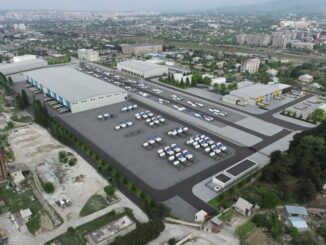
If you’ve read my energy storage report, or just the summaries of parts of it that have appeared on this blog, you have probably thought: this stuff is kind of obvious. Surely the powers that be must have thought of at least some of these issues, and there must be some kind of official position on the responses out there somewhere.
So I thought to look around for the closest thing I could find to the Official Party Line on how the U.S. is supposedly going to get to Net Zero emissions from the electricity sector by some early date. The most authoritative thing I have found is a big Report out in August 2022 from something called the National Renewable Energy Laboratory, titled “Examining Supply-Side Options to Achieve 100% Clean Electricity by 2035.” An accompanying press release with a date of August 30 has the headline “NREL Study Identifies the Opportunities and Challenges of Achieving the U.S. Transformational Goal of 100% Clean Electricity by 2035.”
What is NREL? The Report identifies it as a private lab “operated by Alliance for Sustainable Energy, LLC, for the U.S. Department of Energy under Contract.” In other words, it’s an explicit advocacy group for “renewable” energy that gets infinite oodles of taxpayer money to put out advocacy pieces making it seem like the organization’s preferred schemes will work.
Make no mistake, this Report is a big piece of work. The Report identifies some 5 “lead authors,” 6 “contributing authors,” and 56 editors, contributors, commenters and others. Undoubtedly millions of your taxpayer dollars were spent producing the Report and the underlying models (which compares to the zero dollars and zero cents that the Manhattan Contrarian was paid for his energy storage report). The end product is an excellent illustration of why central planning does not work and can never work.
So now that our President has supposedly committed the country to this “100% clean electricity” thing by 2035, surely these geniuses are going to tell us exactly how that is going to be done and how much it will cost. Good luck finding that in here. From the press release:
The study . . . is an initial exploration of the transition to a 100% clean electricity power system by 2035—and helps to advance understanding of both the opportunities and challenges of achieving the ambitious goal. Overall, NREL finds multiple pathways to 100% clean electricity by 2035 that would produce significant benefits, but the exact technology mix and costs will be determined by research and development (R&D), manufacturing, and infrastructure investment decisions over the next decade.
It’s an “initial exploration.” With the country already supposedly committed to this multi-trillion dollar project on which all of our lives depend, they’re just starting to think about how to do it. “The exact technology mix and costs” — in other words, everything important — “will be determined by research and development” — in other words, remain to be invented. But don’t worry, that will all be done over the next ten years, with plenty of time then remaining to get everything deployed at scale in the three years from then to 2035.
You won’t be surprised that there is a lot of wind and solar generation in this future. How much?
To achieve those levels would require an additional 40–90 gigawatts of solar on the grid per year and 70–150 gigawatts of wind per year by the end of this decade under this modeled scenario. That’s more than four times the current annual deployment levels for each technology.
So there will be an immediate ramp-up of solar and wind deployment to four times current annual levels. No problem! But what if somebody out there objects to having tens of thousands of square miles covered with these things?
If there are challenges with siting and land use to be able to deploy this new generation capacity and associated transmission, nuclear capacity helps make up the difference and more than doubles today’s installed capacity by 2035.
Oh, we’re going to double installed nuclear capacity by 2035. Did anybody tell these people that it takes more than 13 years lead time to build a nuclear plant? At present there are exactly two nuclear plants under construction in the U.S., both at the same site in Georgia. One of them started construction in 2009, and is supposed to enter service next year. That’s 14 years from when the first shovel went in the ground, and there are no other plants anywhere near putting a shovel in the ground.
Well, let’s get to the heart of things, namely the problem of energy storage. From page xii of the Report:
The main uncertainty in reaching 100% clean electricity is the mix of technologies that achieves this target at least cost—particularly considering the need to meet peak demand periods or during periods of low wind and solar output. The analysis demonstrates the potentially important role of several technologies that have not yet been deployed at scale, including seasonal storage and several CCS-related technologies. The mix of these technologies varies significantly across the scenarios evaluated depending on technology cost and performance assumptions.
Aha! This all requires some “seasonal storage” technology that “has not yet been deployed at scale.” (There’s an understatement!). Do they even have an idea of how that might be done?
Seasonal storage is represented in the modeling by clean hydrogen-fueled combustion turbines but could also include a variety of technologies under various stages of development assuming they achieve similar costs and performance. There is significant uncertainty about seasonal storage fuel pathways, which could include synthetic natural gas and ammonia, and the use of alternative conversion technologies such as fuel cells. Other technology pathways are also discussed in the report. Regardless of technology, achieving seasonal storage on the scale envisioned in these results requires substantial development of infrastructure, including fuel storage, transportation and pipeline networks, and additional generation capacity needed to produce clean fuels.
In other words, they have no clue. They’re wildly tossing out ideas of things that have never been tried or demonstrated, let alone costed — and supposedly we’re going to have our whole energy system transitioned to this in 13 years. No surprise that the best idea they have is hydrogen — which, as I describe thoroughly in my report, is a terrible idea. And all that infrastructure they talk about for the hydrogen — none of that currently exists, or is under construction, or is even in a planning stage.
Back to the press release:
A growing body of research has demonstrated that cost-effective high-renewable power systems are possible, but costs increase as systems approach 100% carbon-free electricity, also known as the “last 10% challenge.” The increase in costs is driven largely by the seasonal mismatch between variable renewable energy generation and consumption.
I’ve got news for them: they’re going to hit the wall long before getting to 90% from renewables. Just look at Germany or El Hierro Island to see how that happens. But assume they’re right, and the wall doesn’t come until renewable penetration hits 90%. They fully admit they have no answer at that point. Again from the press release:
Still, getting from a 90% clean grid to full decarbonization could be accelerated by developing large-scale, commercialized deployment solutions for clean hydrogen and other low-carbon fuels, advanced nuclear, price-responsive demand response, carbon capture and storage, direct air capture, and advanced grid controls. These areas are ripe for continued R&D.
Notice how this “demand response” thing gets suddenly slipped in there quietly, without any definition of what it means. Here’s what it means: if the system they create doesn’t work, they reserve the right to turn off your electricity any time they want. Or to jack up the price so high that you can’t afford to use your electricity.
The Report has a big section on cost/benefit analysis, where it is confidently concluded that the benefits far outweigh the costs under any of many scenarios. This is without the storage problem being solved or a solution demonstrated, or costs remotely known.



